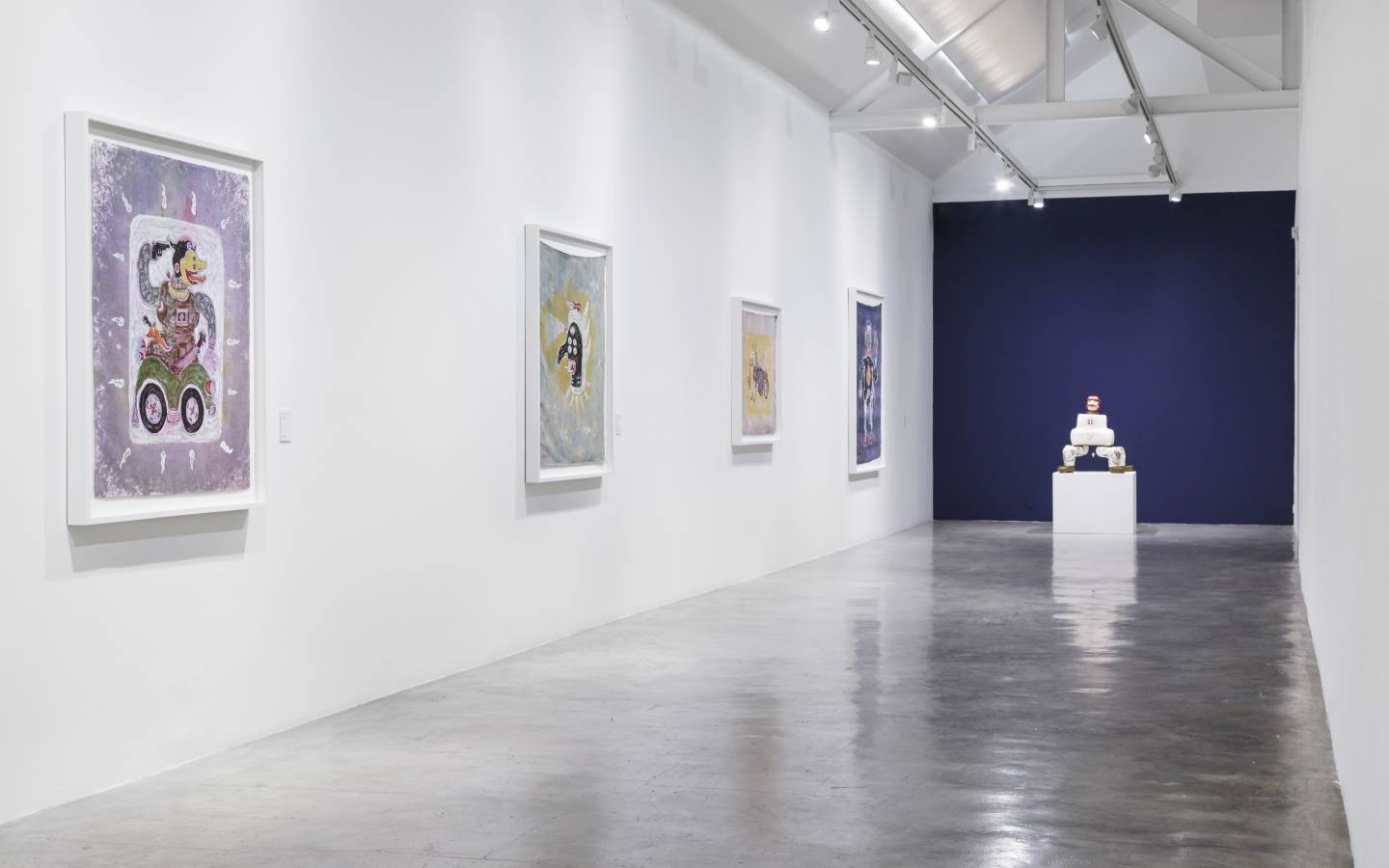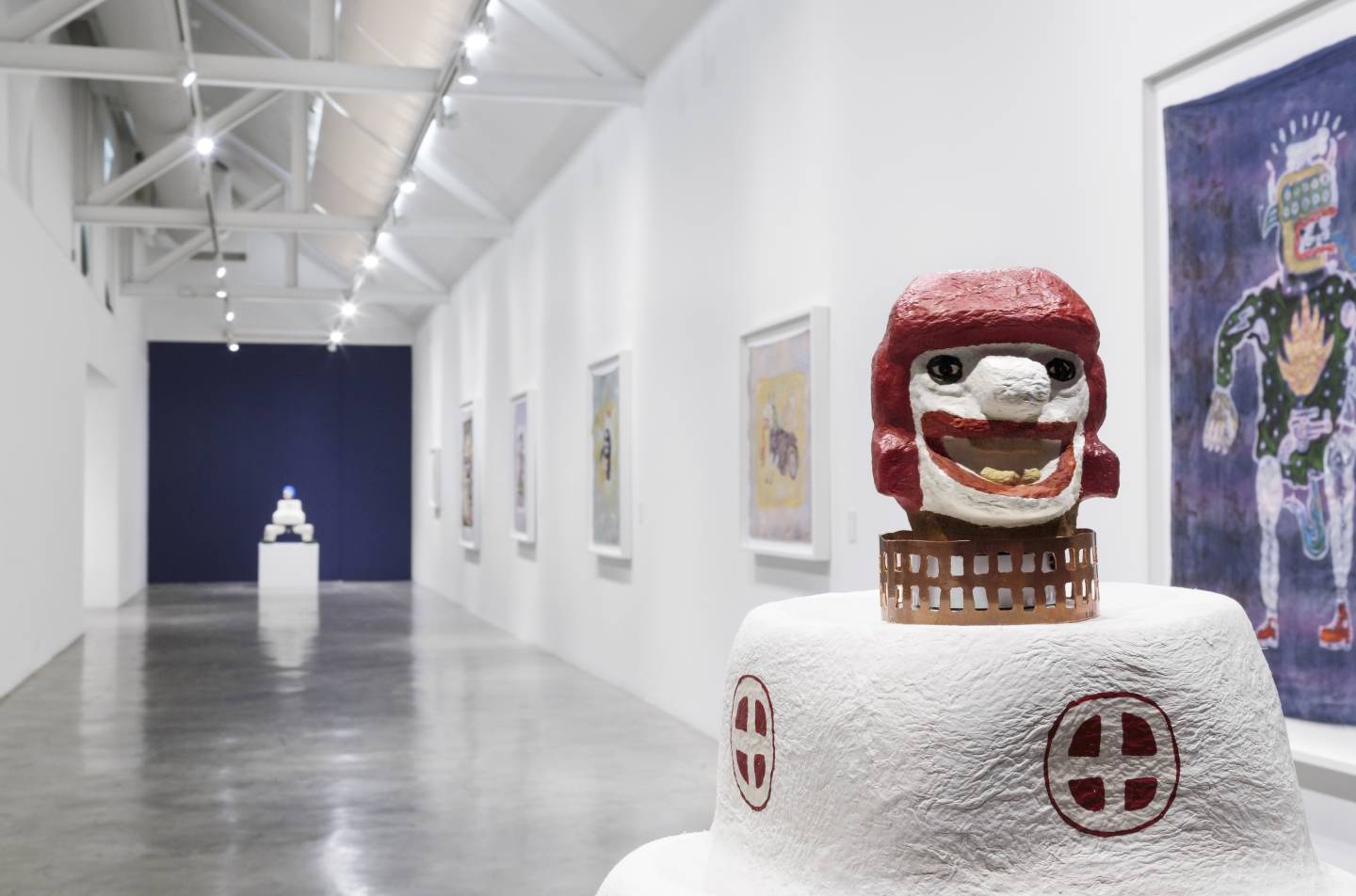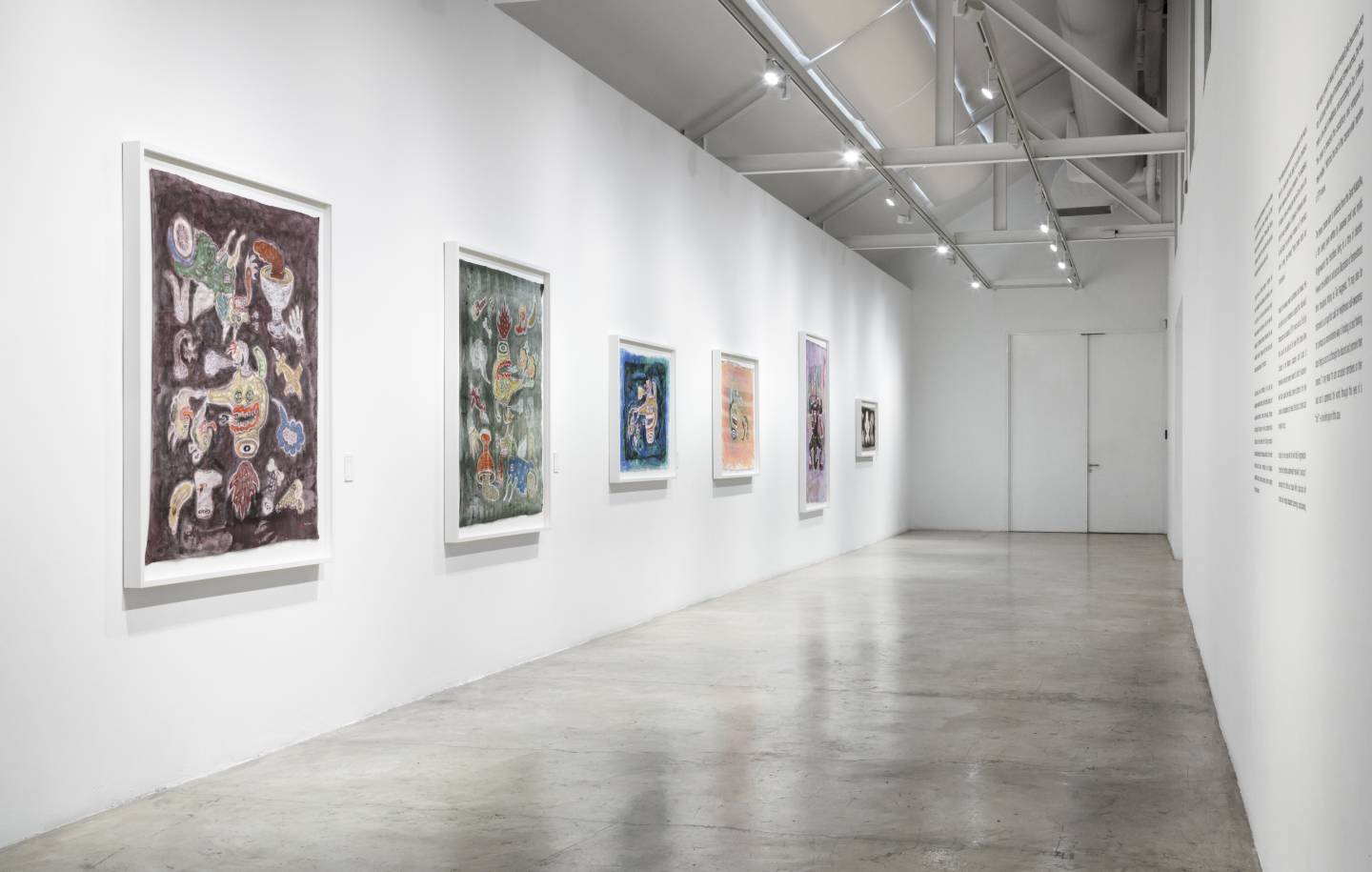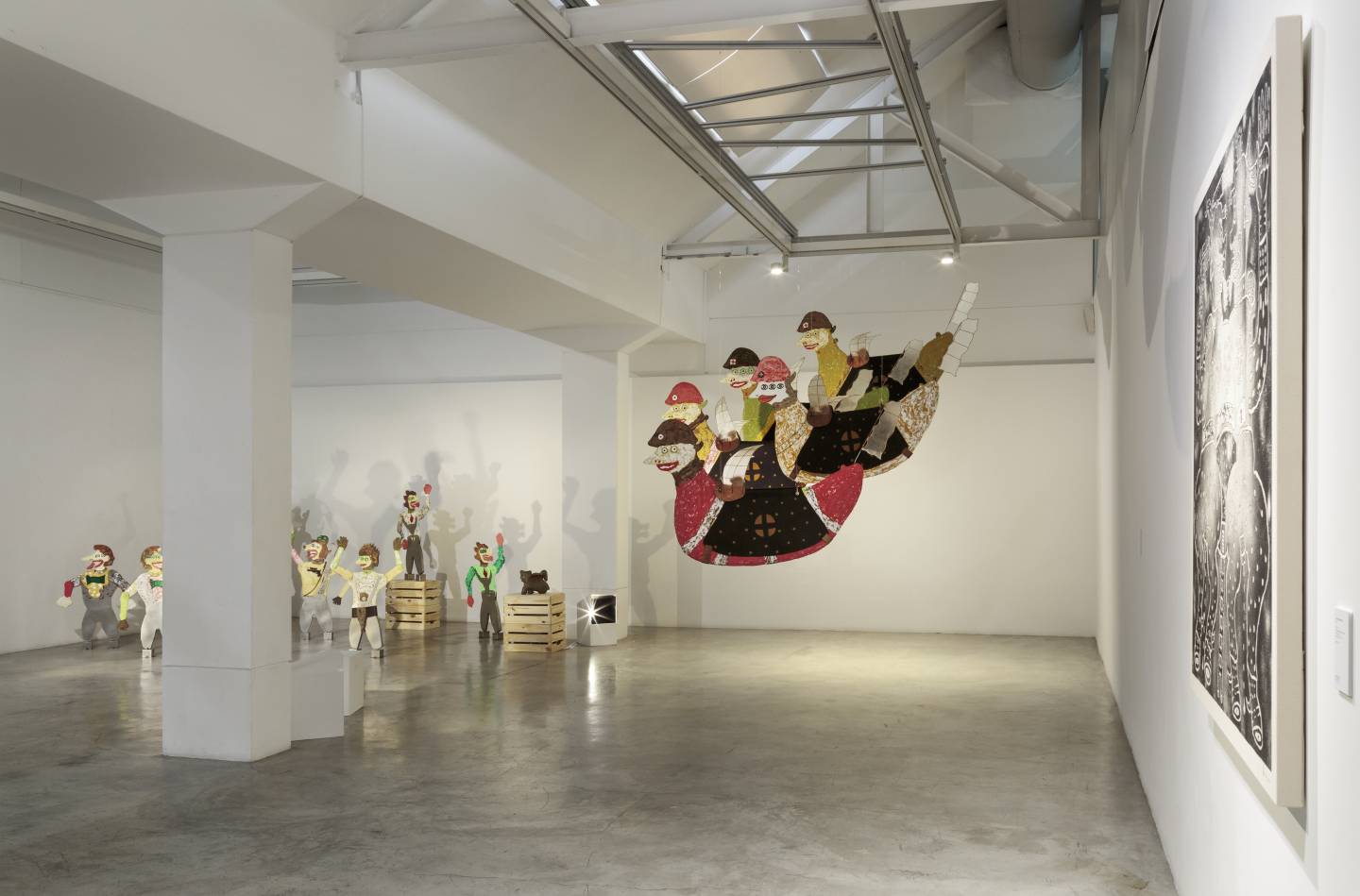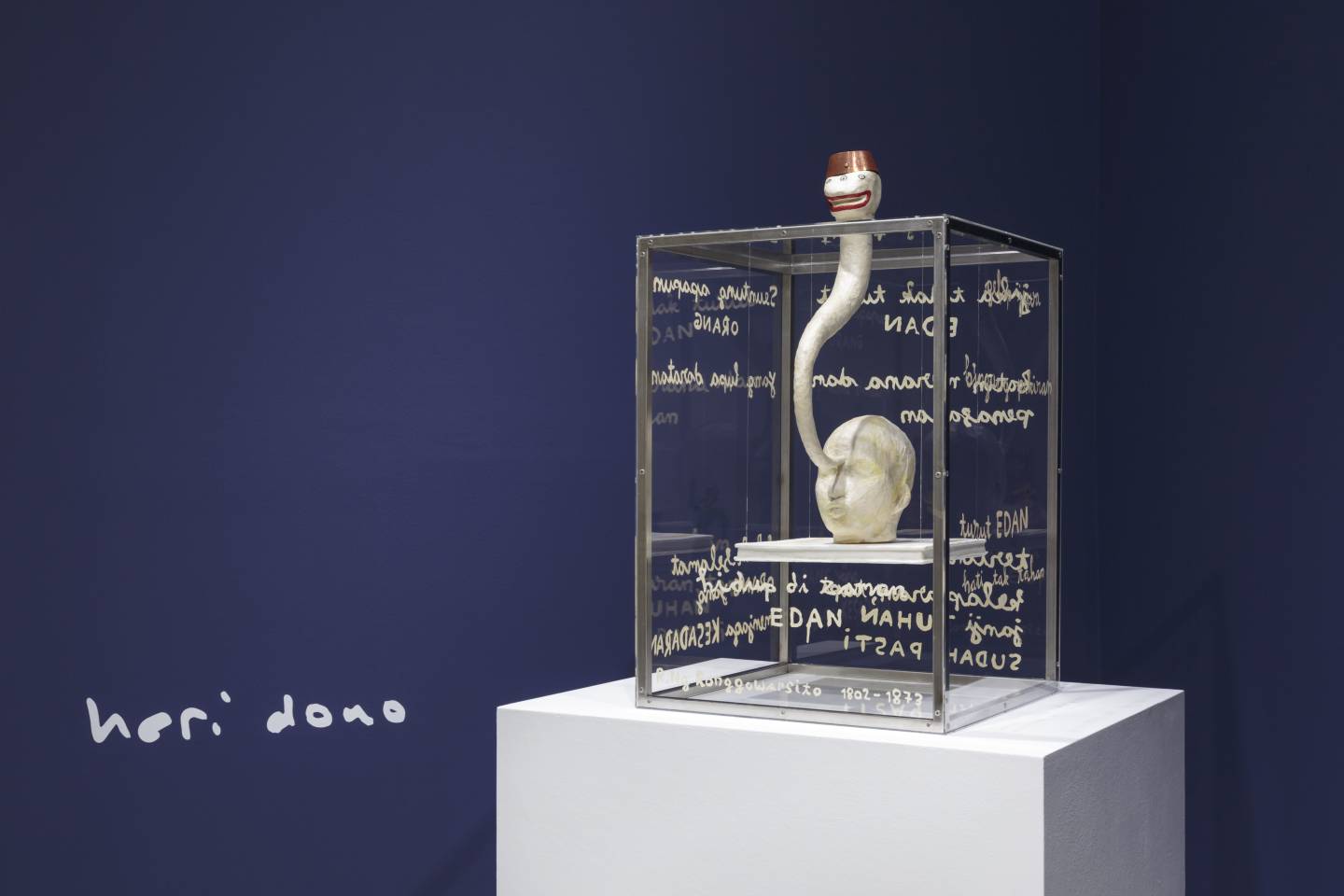Heri Dono: “Zaman Edan” (The Age of Craziness)
21 May - 25 June 2016
Known for his fantastical installations and visual commentaries on socio-political issues and human behaviour, Heri Dono’s latest print and paper explorations in “Zaman Edan” (The Age of Craziness) is steeped in the playful satire often associated with his hybrid characters and pop culture motifs.
This body of work is a spirited portrayal of ‘madness’, told through the interplay of new techniques and materials, as well as the artist’s use of the Javanese shadow puppet theatre known as wayang kulit. According to curator and writer Jim Supangkat, they “triggered previously unexplored ideas and sensibilities” and is “perhaps the first time that beautiful colours and nuances appear” in his practice.
From shadow play and theatricality in his paper pulp installations to kinetic sculptures, batik-inspired paintings, and screen-printed canvases of clowns, man-beasts, machines, and etchings of the ‘topsy-turvy’—Heri has combined various artistic modes to great emotive effect. Defying contextualisation despite their apparent Indonesian aesthetic, Heri’s works reference comics, cultures, mythologies and ambiguous authoritative figures, addressing universal matters regarding the state of humanity.
These multifaceted personas and narratives allude to the twisted logic of an “upside down” mind as a whole, taking “a position of resistance against a hegemonic discourse or perspective” that destabilises binaries of right and wrong, good and evil. In doing so, they reflect the truth of human complexities. As Singapore Art Museum curator Tan Siuli states, Heri puts forward ‘madness’ as “a necessary state of being” that ironically “brings greater clarity and consciousness.”
Amidst this whimsical world of distortions and humour, Heri also altered his use of symbolisms to suggest that a fair deal of introspection was explored at STPI. In works such as The Body Who Looks for the Spirit and The Hunter With Upside Down Creatures in the Machine, characters point pistols at themselves akin to the manner in which the ‘artist’ is featured in Heri Dono Upside Down Mind, drawing attention to his own personal contemplation on the roles of the artist, art market and art within society.
Notably, the show opens with the work titled Ronggowarsito Perspective, depicting a papier-mâché head with a “periscope” emerging from its third eye. Encased within a glass box with phrases like menjaga kesadaran (preserving consciousness), hati orang (a person’s heart), turut menjadi gila (becoming crazy too), and zaman edan (age of madness) strewn across, the head refers to the artist in meditation, and according to Tan, it reflects “the desire to transcend the cacophony and entrapment of ‘false realities’.” With this, the rest of the ‘zaman edan’ narrative at STPI ensues.
The phrase ‘zaman edan’ is extracted from the Serat Kalatidha, a 19th century poem written by Javanese poet and mystic Ronggowarsito that describes living in a time of disorder. However the exhibition is not just an illustration of tempestuous times throughout history. As Tan suggests, “it may also be interpreted as an age that calls for heightened self-awareness and perhaps an unconventional way of looking at and thinking about things so as to cut through the discord and perceive their essence.”
It may mean “to turn accepted narratives on their head and to apprehend the world through the eyes of a ‘fool’.”


